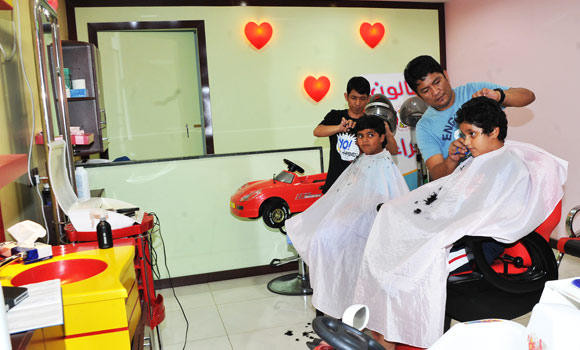Barbershops here have seen a 50 percent decline in customers because of the practice of their older clientele to not cut their hair or shave their beards during the first 10 days of Dhul Hijjah.
The practice stems from a saying of the Prophet (peace be upon him), which recommends Muslims not cutting their nails or hair if they plan to sacrifice an animal on Eid Al-Adha.
More than 40 percent of hair salons and barbershops, close to 3,300 shops for males and 650 for females, are located in Jeddah. Several barbers contacted by Arab News said when there is such a sharp reduction in customers they use the time to either go on holiday or sort out any unfinished business.
Mohammed Yousef, an Egyptian barber, said this situation occurs every year. He usually cuts children’s hair during this time to compensate for the decline in the number of older customers.
Majeed Al-Rashidi, a Moroccan barber, said he usually takes his holiday every year during the Eid break so that he can spend time with his family back home. He also uses some of the time for maintenance work on the shop. Arshan Haseebullah, a barber from Pakistan, said some of the poorer barbers continue to work during this period because they need the money.
Azbak Hussain, a Turkish barber, usually relocates to Makkah from Dhul Hijjah 1 to 10 to work alongside his brother at a barbershop close to the Grand Mosque where there are many more customers. However, this year he could not get a permit to enter the city and has decided to spend time with his children in Turkey.
In a recent poll, 57 percent of respondents said they visit their barbershops at least once a week, 17 percent once a month, and 2 percent on special occasions and holidays.
According to the poll, 14 percent bring personal shaving kits along with them to their barbershops, while 11 percent keep shaving items at their homes. Forty-three percent of customers select barbers based on cleanliness, while 45 percent cited waiting periods as a key factor. Roughly 13 percent of respondents said they do not consider shaving as a major reason of disease transfer between people, while 5 percent said they visit their barbers for hair loss treatments.
10 no-haircut days leave barbers ‘sacrificing’ 50% business
10 no-haircut days leave barbers ‘sacrificing’ 50% business











